Regions around the world are reporting supposed environmental benefits even as COVID-19 brings their economies and societies to a standstill. Although there are visible short-term benefits in terms of air pollution, Hong Kong is seeing a rise in land pollution in the form of strewn masks.
Over the past few weeks, some parts of the world have seen improvements in their air quality. For example, NASA and European Space Agency (ESA) have released visualizations showing reductions in levels of nitrogen dioxide – a greenhouse gas released from factories, power plants, and vehicles – in China.
“As nitrogen dioxide is primarily produced by traffic and factories, it is a first-level indicator of industrial activity worldwide,” says Josef Aschbacher, ESA’s Director of Earth Observation Programmes, in a press release.
“What is clearly visible is a significant reduction of nitrogen dioxide levels over China, caused by reduced activity due to COVID-19 restrictions, but also the Chinese New Year in January.”
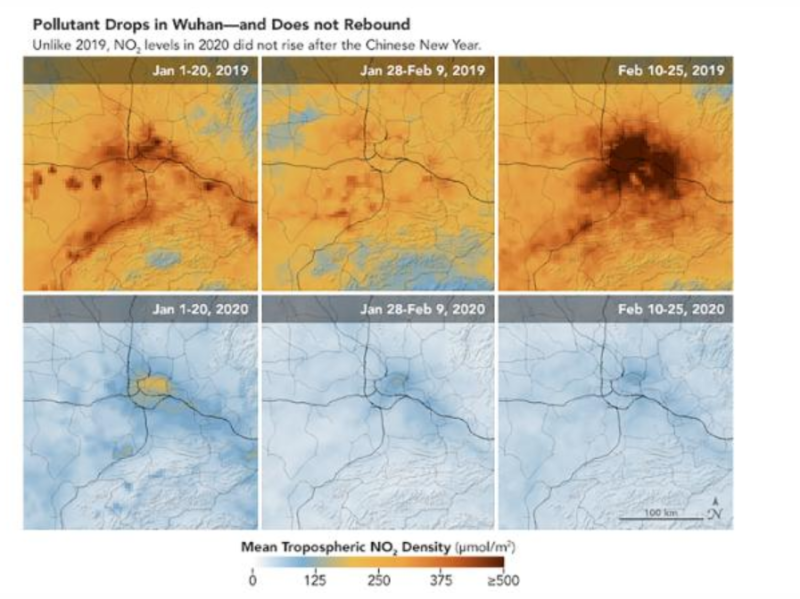
“This is the first time I have seen such a dramatic drop-off over such a wide area for a specific event,” said Fei Liu, an air quality researcher at NASA’s Goddard Space Flight Center, in NASA’s announcement.
“I am not surprised because many cities nationwide have taken measures to minimize spread of the virus.”
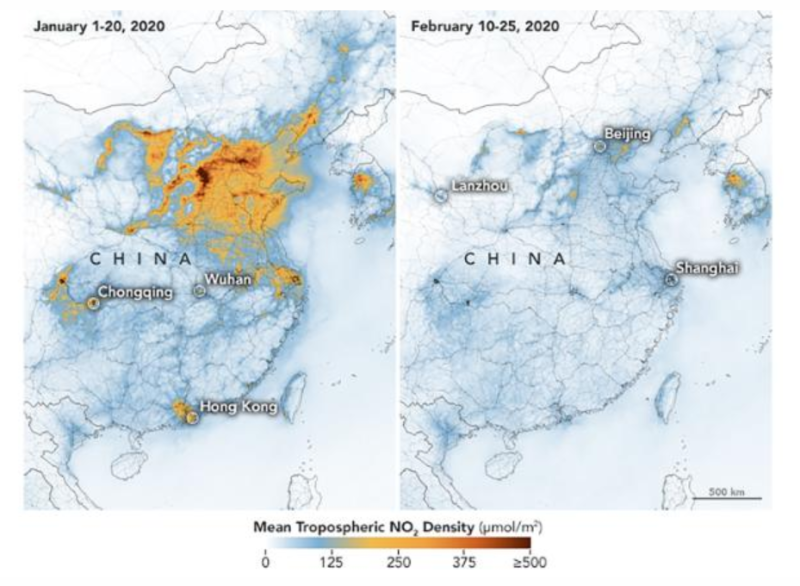
Such benefits are being seen in other parts of the world too. The ESA also showed improved air quality in places such as Italy, France and Spain, which are in the midst of national lockdowns. These countries saw reduced nitrogen dioxide levels, especially in their capitals and biggest cities.
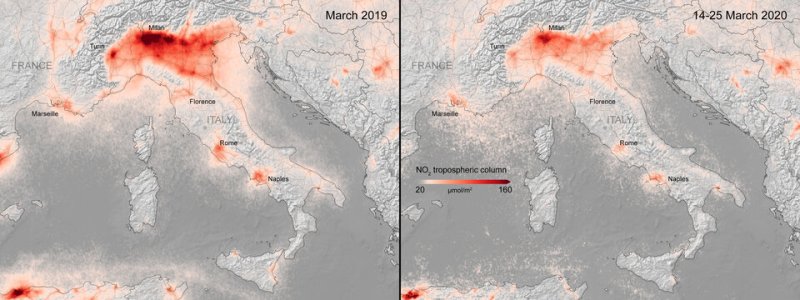
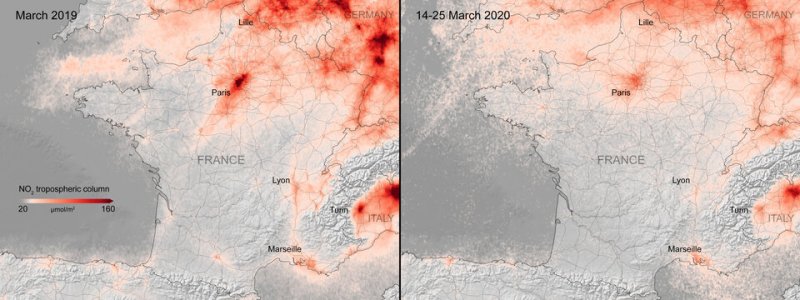

The supposed environmental improvements weren’t just limited to air quality. Soon after Italy’s lockdown began, social media was abuzz with reports that marine life was starting to flourish in Venice. Normally, this city, which is famous for its canals, draws in millions of tourists every year which also impacts its water quality.
Here’s an unexpected side effect of the pandemic – the water’s flowing through the canals of Venice is clear for the first time in forever. The fish are visible, the swans returned. pic.twitter.com/2egMGhJs7f
— Kaveri 🇮🇳 (@ikaveri) March 16, 2020
Twitter post that shows alleged swans in Venice canals due to clearer water. Credit: Twitter
While the origins of the pictures in such tweets were debunked, the glimmer of good news lived on as Venice’s waters are still becoming clearer.
However, when it comes to Hong Kong, the environment’s response has been mixed at best.
On one hand, there seemed to have been drops in the levels of pollutant particles in Hong Kong’s air, according to an analysis from CNN in mid-March. The media organization looked at levels of finer particulates PM2.5 and larger particulates PM10, common indicators of harmful air pollution, across Hong Kong during the period of measures against COVID-19.

They did report that PM2.5 levels dropped by as much as 32%, with busy areas like Central, Causeway Bay and Mongkok benefiting the most. PM10 levels also fell by up to 29%, while nitrogen dioxide levels were down to 22%.
However, the air quality index of Hong Kong paints a different picture, especially when compared to 2019.
The city’s Environmental Protection Department (EPD) keeps track of the city’s air quality using a scale called the Air Quality Health Index (AQHI). It’s the department’s way of letting Hong Kongers know how safe it is to breathe in the surrounding air. A higher number means a higher health risk.

During the period of Chinese New Year, the first month of COVID-19 infections in Hong Kong, the city showed a visible difference from the previous year— late January 2020’s air quality was better to breathe in than that of late January 2019. This period coincides with around Jan. 23, when Wuhan began its first lockdown.
However, as the weeks wore on, the data began looking more ambiguous, being better in 2019 sometimes and in 2020 during other times.
Up to date, no formal research has been carried out on how Hong Kong’s environment is impacted by COVID-19. The Hong Kong Observatory was quick to stress what this implies, especially for how we understand long-term climate change.
“Climate change refers to long-term variations in the climate – in decades to centuries,” said Fu Cheung Sham, Chief Experimental Officer at the Observatory’s Climate Forecast Services and Climate Change Studies.
“While COVID-19 may have short-term implications on carbon emissions, it would be premature to draw any conclusion about the impacts of COVID-19 on climate change.”
His sentiments are echoed by NASA and ESA, who have begun conducting more long-term studies on the environmental impact of COVID-19 – an outbreak that has only been around for about three months.
But there is one area in which Hong Kong can start improving in the short-term: the waste that comes from single-use surgical masks.
Reuters reported in March that a Hong Kong-based environmental group, OceansAsia, discovered an increasing number of face masks strewn on Soko islands, an isolated group of islands to the south of Hong Kong.
During OceanAsia’s monthly beach cleanups as part of a plastic pollution research, they would normally discover “the odd mask here and now” on the island’s beaches before the coronavirus outbreak, according to the environmental group.
However, in their February clean-up, the group found 70 discarded masks in just a 100 m stretch of beach, says Gary Stokes, lead field operative of OceansAsia. When he came back a week later, he found more than 30 new masks.
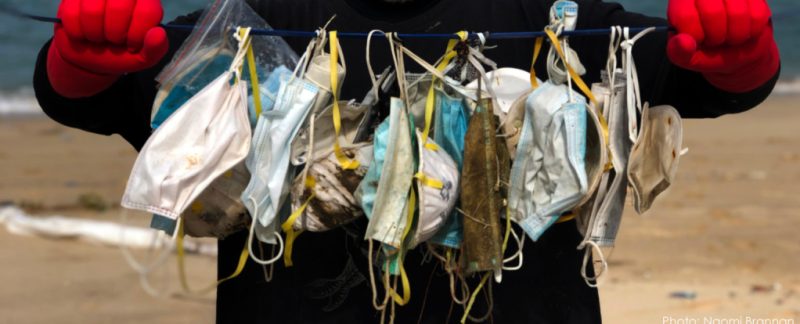
A spokesperson for the Environmental Protection Bureau clarifies that the masks are not classified as recyclable and should not be put into recycling bins.
“After taking off their face masks, members of the public are advised to discard them in lidded rubbish bins,” said the spokesperson. “The face masks should not be littered outdoor and at countryside, as this may pose health risk and pollute the environment and the nature.”
Tracey Read, founder of the environmental group Plastic Free Seas in Hong Kong, expressed her dismay at such single-use masks ending up in oceans.
“People think they’re protecting themselves, but it’s not just about protecting yourselves,” she tells Reuters, “You need to protect everybody and by not throwing away the mask properly, it’s very selfish.”
(Feature Image Credit: NASA Earth Observatory.)


1 comment